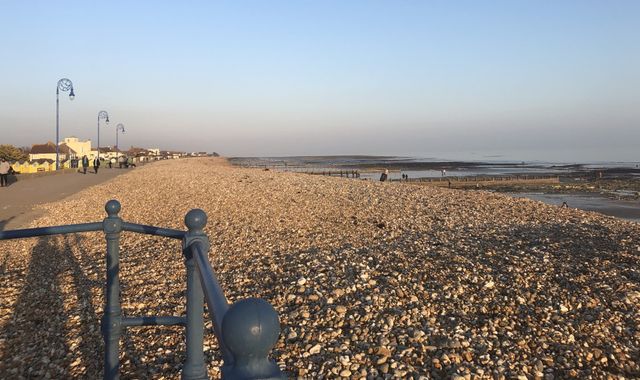Coronavirus: Areas with highest number of weekly COVID-19 cases revealed
Written by News on 02/07/2020
Further local lockdowns are “just days away”, Sky News understands.


Sources in Public Health England (PHE) and the Department for Health told Sky News they are “working collaboratively”, focusing on the areas in England where coronavirus cases are rising.
As a result, local lockdowns like the one in Leicester could be implemented in “just days”, Sky News’ Inzamam Rashid was told.
It comes as it was revealed that a further 176 people have died in hospitals, care homes and the wider community after testing positive for COVID-19, taking the UK’s official total to 43,906 deaths.
Figures released by PHE show the areas with the highest number of weekly cases in England.
It shows that Leicester has the highest rate of cases in the week between 15 and 21 June, with Bradford second, Barnsley third and Rochdale fourth.
Barnsley Council’s leader Sir Steve Houghton has said he does not believe further lockdown measures will need to be implemented in the town like they have been in Leicester.
In a joint statement with Barnsley’s director of public health Julia Burrows, he said: “According to our most up to date data, we have seen a reduction in the number of daily new cases and in the average number of new cases for four consecutive days.
“We are continuing to monitor this and other data very closely, and to proactively manage the disease locally and in line with national guidance.
“This is why we do not believe at this stage any further measures will need to be implemented such as the ones seen in Leicester.”
Councillor Susan Hinchcliffe, Bradford Council Leader, said figures from PHE show Bradford “with a high number of infections along with a number of other northern authorities, although we are some way behind Leicester”.
“The number of people testing positive for the virus is still too high and we continue to work hard with all our partners to prevent infection spreading as no one wants a second lockdown.
“We must all stay vigilant, we don’t want to see a second spike of cases that inevitably would mean more deaths. Don’t be conned into thinking it’s all OK now, it’s not.”
Andrea Fallon, Rochdale Borough Council’s director of public health, said: “Residents should be reassured that the numbers we have seen recently are still well below those in Leicester where lockdown measures are being reintroduced.
“In Leicester Matt Hancock said that there were 135 positive case per 100,000 and we had 28.8 so the comparisons are misleading and unhelpful.”
A new snapshot for the week ending 28 June is due to be published tomorrow.
Previously, the government only made public the results of what is known as pillar 1 tests.
This is the number of patients and staff testing as positive in hospitals and PHE labs.
Positive cases identified in testing centres, known as pillar 2, have not been made public until now.
The British Medical Association has called on the government to provide accurate and up-to-date data on spikes in coronavirus cases to local authorities so they can act fast to save lives and protect the NHS.
Leicester City Council did not previously have access to pillar 2 figures, but this is now being provided.
A spokesperson said: “PHE publishes daily cases of COVID-19 broken down by local authority which includes people tested as part of pillar 1.
“This is used as one of a number of indicators to help us and partner organisations to identify trends in local areas and to take action accordingly.
“To use these data in isolation to predict which areas will see significant increases in cases is not appropriate as they do not provide a complete picture of what is happening locally.”
:: Listen to the Daily podcast on Apple Podcasts, Google Podcasts, Spotify, Spreaker
It has been widely reported that 36 areas are “at-risk”. Sky News is contacting these local authorities and the Department of Health for comment.
Councillor Darren Rodwell, leader of Barking and Dagenham Council in east London, said there is “no comparison” in what is happening in Leicester with his area.
“It has actually caused real concern in my community,” he told Sky News. “It simply isn’t true.”
He said: “We have had an additional 14 cases that have been tested and proved, whereas in Leicester it has been 924. There is no comparison. But these sorts of message scare lots of people that are already shielding and have been doing the right thing.”
Councillor Ian Hudspeth, chairman of the Local Government Association’s community well-being board, said councils are working tirelessly to prevent and contain potential future flare-ups.
He told Sky News: “More data is starting to be shared with councils’ directors of public health, which is good news.
“It is clear that more precise, granular information is needed in order to help councils track down and isolate any specific outbreaks or clusters.
“This data needs to be provided promptly and shared quickly, with both district councils and upper tier local authorities, to ensure the swiftest and most effective response.
“Proportionate responses, which have the consent of the community, are the best way in dealing with local outbreaks and we expect this to happen in the vast majority of cases.
“Councils want to work with the public and local businesses on this and the use of powers should only ever be needed as a last resort, to manage the outbreak and prevent the spread of infection.”
Wandsworth Council leader Ravi Govindia said: “These claims of a local surge and a lockdown are wholly inaccurate and people should not panic or feel unduly alarmed.”
He added: “If a scenario develops where we need to take additional steps then people can be reassured that we are well placed to do so without delay – but that is not a scenario we are facing at the moment.”
Dr Mark Ansell, Havering Council’s director of public health, said: “Public Health England London have reviewed cases in London and the overall trend remains downwards. We are nowhere near the levels where a lockdown would even be considered.”
Dr Rupert Suckling, director of public health at Doncaster Council, said: “More data is now becoming available nationally and this will be open to scrutiny and speculation.
“Since the reporting of both pillar 1 and pillar 2 testing we have seen a high number of positive cases beginning with the week 25th to 31st May and this coincided with widespread testing in our care homes where we identified a number of asymptomatic positive cases.
“We have also seen cases in health and care workers, with sporadic cases in schools.
“However, the weekly testing from the week 8th -14th June shows a significant reduction.”
A Brent Council spokesperson said: “The situation is constantly monitored, but public health data does not suggest that cases are rising in the borough and there are currently no plans for a local lockdown.”
Analysis: The difference between pillar 1 and pillar 2 and why it matters
By Isla Glaister, data journalist
Both pillar 1 and pillar 2 of the government’s testing strategy use a swab from a person’s nose or throat to identify whether they currently have COVID-19.
But there also some crucial differences that mean results from both are needed to spot candidates for local lockdowns.
Pillar 1 takes place in PHE and NHS laboratories and tests people in clinical need, as well as health and care workers.
So, it mainly measures the prevalence of the virus in hospitals and care homes.
But more than three quarters of new cases are now being identified in the wider community and that is what pillar 2 measures.
Anyone who thinks they have symptoms can be tested under pillar 2 at around 50 privately run regional sites and at mobile units run by the army. Testing kits are also sent to people at home.
England is now the only UK nation which doesn’t publish daily figures for pillar 2 test results.
This was less of a problem when testing was mainly taking place in hospitals, but community testing is now an increasingly important part of the picture.
It was only once this data was included that the problem in Leicester became clear and it will likely prove crucial to identifying new outbreaks.
(c) Sky News 2020: Coronavirus: Areas with highest number of weekly COVID-19 cases revealed







